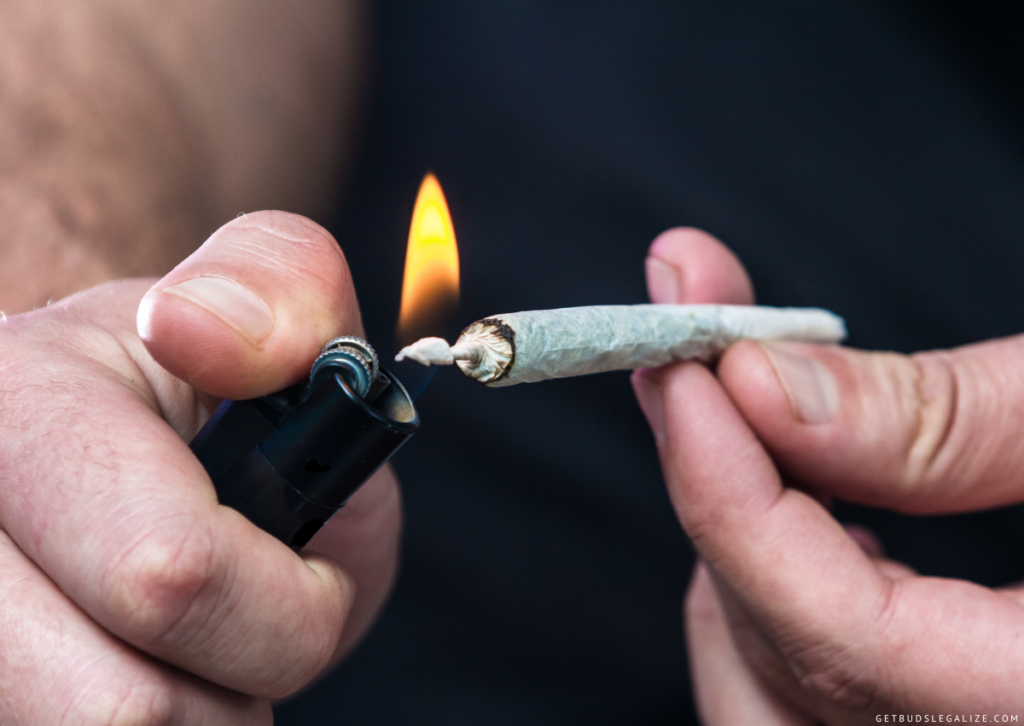Is Secondhand Cannabis Smoke Harmful to Your Health?
Cannabis is a plant that contains psychoactive compounds, such as tetrahydrocannabinol (THC), that can affect the brain and body of the user. Smoking cannabis is one of the most common ways of consuming it, but it also produces smoke that can be inhaled by others who are nearby. This is called secondhand cannabis smoke and could have some health consequences for non-consumers.
What Is Secondhand Cannabis Smoke?
Secondhand marijuana smoke is the smoke that comes from burning marijuana or from the exhaled breath of someone who has smoked it. It contains many of the same chemicals as the smoke that is inhaled by the user, including THC, carbon monoxide, tar, and other toxins.
However, the amount and concentration of these chemicals may vary depending on several factors, such as the potency of the cannabis, the method of smoking, the ventilation of the area, and the distance and duration of exposure.
Risks Associated with Secondhand Marijuana Smoke Exposure

The health risks of secondhand marijuana smoke are not fully understood, but some studies have suggested that it may have some negative effects on the respiratory system, the cardiovascular system, and the immune system.
For example, secondhand marijuana smoke may cause irritation, inflammation, and damage to the lungs and airways, increasing the risk of respiratory infections, asthma, bronchitis, and chronic obstructive pulmonary disease (COPD).
It may also affect the blood vessels and the heart, increasing the risk of high blood pressure, heart attack, and stroke. Additionally, it may impair the function of some immune cells, making the body more vulnerable to infections and diseases.
Does Secondhand Cannabis Smoke Lead to a Contact High?
A contact high is a term that refers to experiencing some of the psychoactive effects of cannabis without directly consuming it. Some people may wonder if inhaling secondhand weed smoke can cause a contact high, especially if they are exposed to large amounts or for long periods.
The answer is not clear-cut, as different studies have shown different results. Some studies have found that secondhand weed smoke can cause detectable levels of THC in the blood and urine of non-users, as well as some mild impairments in cognitive and psychomotor functions.
Other studies have found that secondhand weed smoke does not cause significant changes in THC levels or subjective or objective measures of intoxication. The discrepancy may be due to differences in methodology, sample size, exposure conditions, and individual factors.
Secondhand Cannabis Smoke vs. Secondhand Tobacco Smoke

Many people may compare secondhand marijuana smoke to secondhand cigarette smoke, as both are forms of environmental tobacco smoke (ETS) that can affect non-smokers. However, there are some important differences between them.
First, secondhand smoke from tobacco is more prevalent than secondhand cannabis smoke, as tobacco smoking is more common and socially accepted than cannabis smoking.
Secondly, secondhand smoke from tobacco has been extensively studied and has been shown to cause serious health problems, such as cancer, heart disease, and lung disease. Secondhand smoke from cannabis has not been studied much and its health consequences are less certain and less serious.
Third, secondhand tobacco smoke contains nicotine, a highly addictive substance that can cause dependence and withdrawal symptoms in non-smokers. Secondhand smoke from cannabis does not contain nicotine and does not cause addiction or withdrawal in non-users.
Is Secondhand Weed Vapor Harmful?
Vaping is another way of consuming cannabis that involves heating it to produce a vapor that can be inhaled. Vaping is often considered a safer alternative to smoking, as it does not produce combustion or tar that can harm the lungs.
However, vaping still produces a vapor that contains THC and other chemicals that can be inhaled by others who are nearby. This is called secondhand weed vapor, and it may have some health effects on non-users.
The health consequences are not well known but could be similar to those of secondhand cannabis smoke. However, some studies have suggested that secondhand steam may be less harmful than secondhand marijuana smoke, as it contains lower levels of carbon monoxide and other toxins. It may also be less likely to cause high contact in non-consumers, as it has lower concentrations of THC.

FAQs
The best way to avoid or reduce secondhand vapor or smoke exposure is to avoid being around people who are smoking or vaping cannabis. If you are a smoker or vaper yourself, you should refrain from smoking or vaping indoors or in enclosed spaces where other people may be exposed to your smoke or vapor.
You should also respect the laws and regulations regarding smoking or vaping in public places. If you live with someone who smokes or vapes cannabis, you should encourage them to quit or use a less harmful method of consumption, such as edibles or tinctures.
Children are especially vulnerable to the effects of secondhand cannabis smoke or vapor exposure because their lungs and brains are still developing. You should never smoke or vape cannabis around children or allow anyone else to do so.
You should also keep your cannabis products and devices out of reach of children and store them in a secure place. You should educate your children about the dangers of smoking or vaping cannabis and set a good example by not using these products yourself.
The duration of secondhand cannabis smoke or vapor in the air depends on several factors, such as the amount of smoke or vapor produced, the ventilation of the environment, the weather conditions, and the presence of other pollutants.
Generally speaking, secondhand cannabis smoke or vapor dissipates faster outdoors than indoors. However, it can still linger for hours or days in poorly ventilated spaces or fabrics. You can improve the air quality by opening windows, using fans, installing air filters, or cleaning surfaces.
The amount of time that THC stays in your system after being exposed to secondhand cannabis smoke or vapor depends on several factors, such as the potency of the cannabis smoked or vaped, the duration and proximity of exposure, your metabolism rate, your body fat percentage, and your frequency of cannabis use.
Generally, THC can be detected in urine for up to 3 days after a single exposure, but this can vary depending on the factors mentioned above. For chronic or heavy cannabis users, THC can remain in urine for up to 30 days or longer. Blood and saliva tests can detect THC for up to 24 hours after exposure, while hair tests can detect THC for up to 90 days.
However, these tests are not very reliable or accurate for measuring secondhand exposure, as they can also pick up traces of THC from the environment or personal contact with cannabis users.
It is unlikely that you will get secondhand high from secondhand cannabis smoke unless you are in a very enclosed space with heavy smokers for a long time. Most of the THC in cannabis smoke is absorbed by the lungs of the person who smokes it, and only a small amount is released into the air
However, some studies have shown that people who are exposed to secondhand cannabis smoke may experience mild effects, such as increased heart rate, blood pressure, and mood changes. These effects depend on several factors, such as the potency of the cannabis, the ventilation of the room, and the duration and frequency of exposure.
It is possible, but very rare. Drug tests detect the presence of THC or its metabolites in your urine, blood, saliva, or hair. The amount of THC or its metabolites that you have in your system depends on how much you consume, how often you consume it, and how your body processes it.
Generally, the tests have a cutoff level that determines whether you test positive or negative. If you are exposed to secondhand cannabis smoke, you may have trace amounts of THC or its metabolites in your system, but not enough to exceed the cutoff level.
However, if you are exposed to very high levels of secondhand cannabis smoke for a long time, or if you have a very sensitive drug test, you may test positive.
The best way to protect yourself is to avoid being exposed to it. If someone is smoking cannabis near you, you can ask them to stop or move away from them. You can also open a window or use a fan to improve the ventilation of the room.
If you live with someone who smokes cannabis regularly, you can ask them to smoke outside or in a designated area. You can also use air purifiers or filters to reduce the amount of cannabis smoke in your home. Additionally, you can educate yourself and others about the potential risks and benefits of cannabis use and secondhand exposure.

















